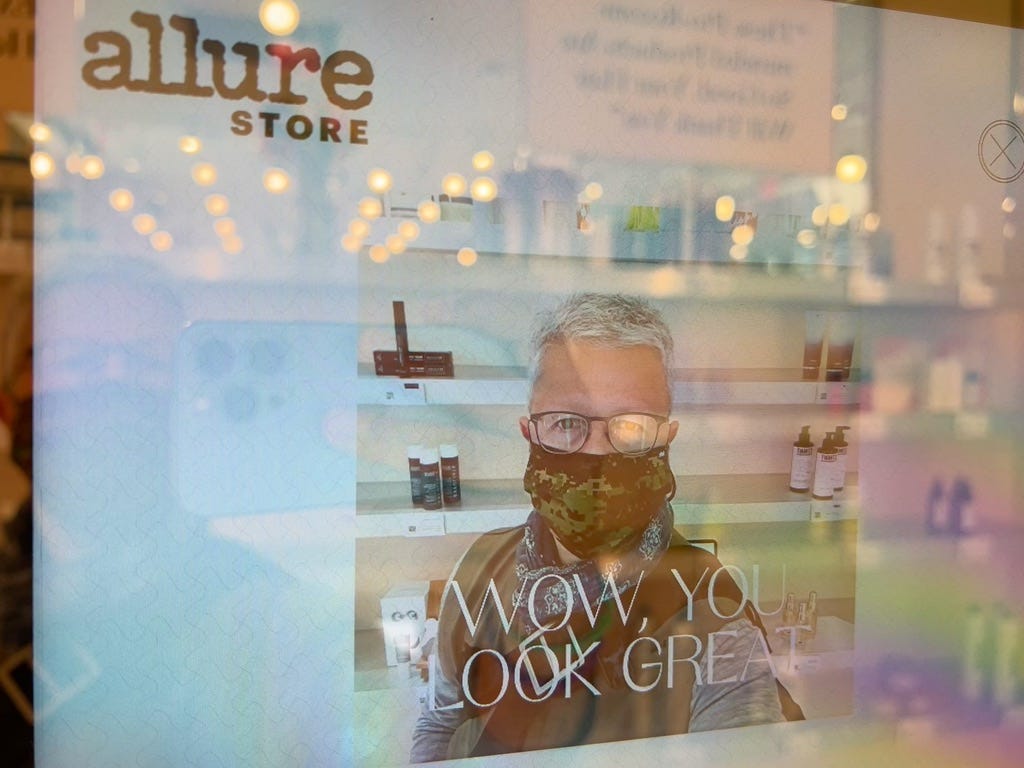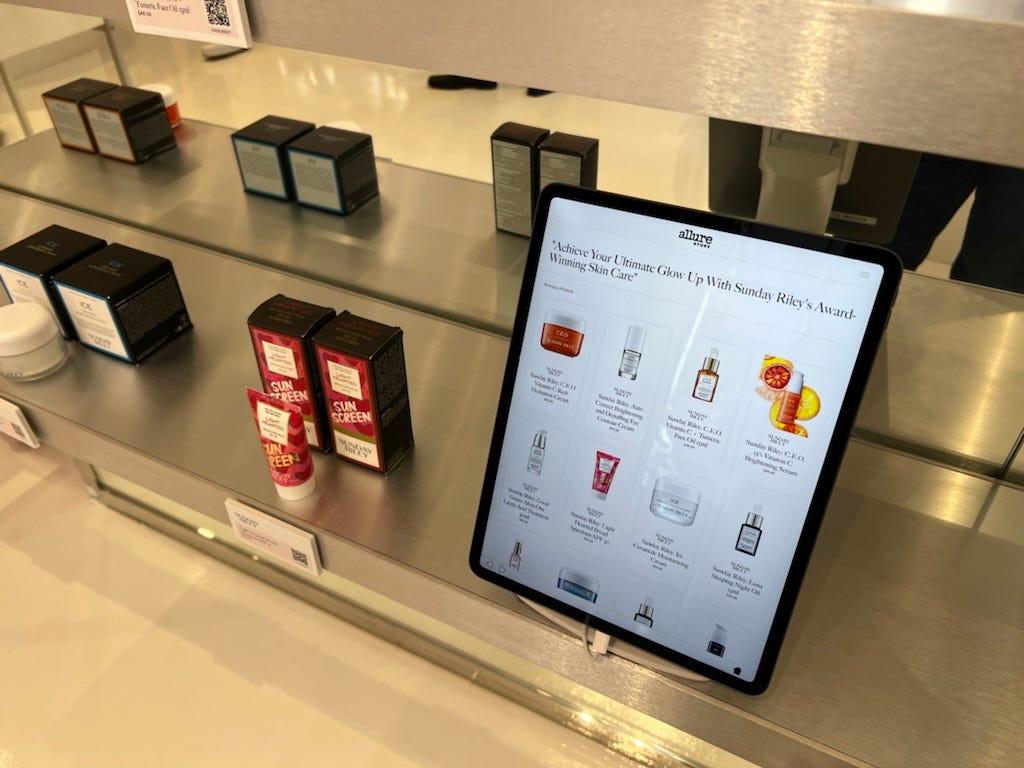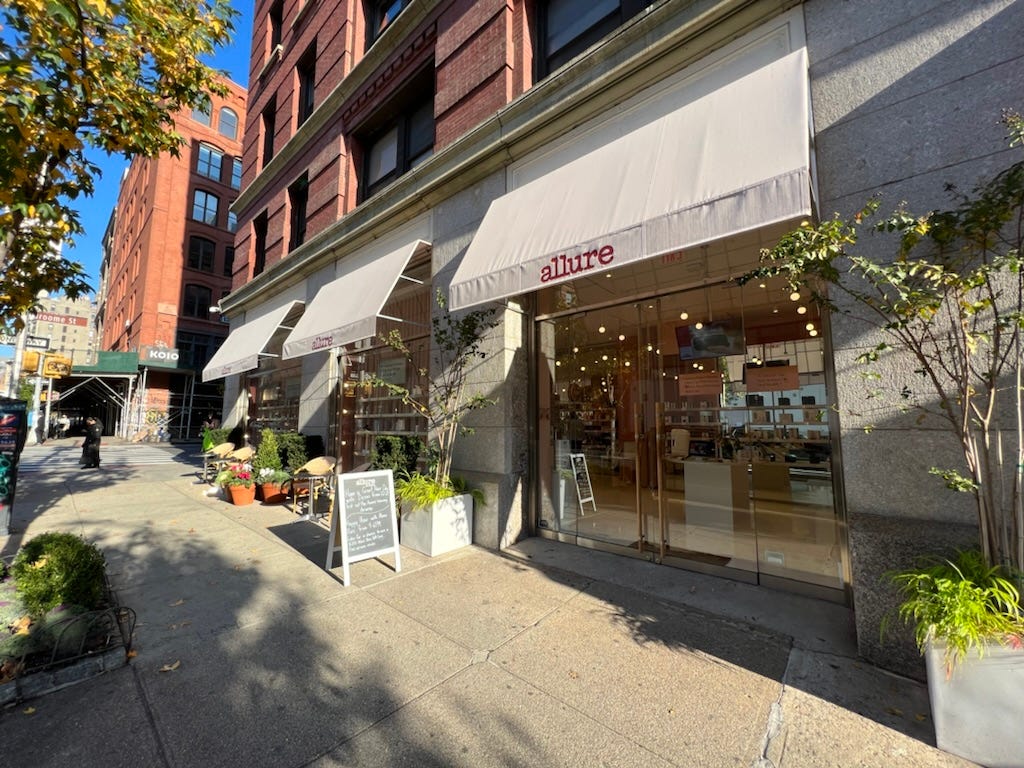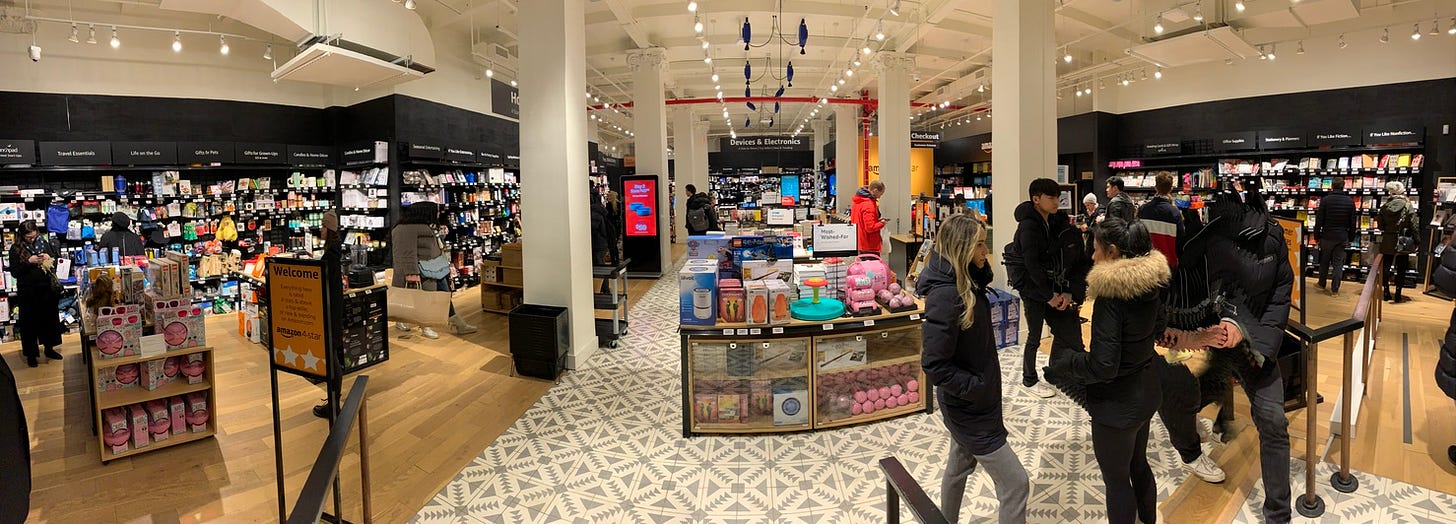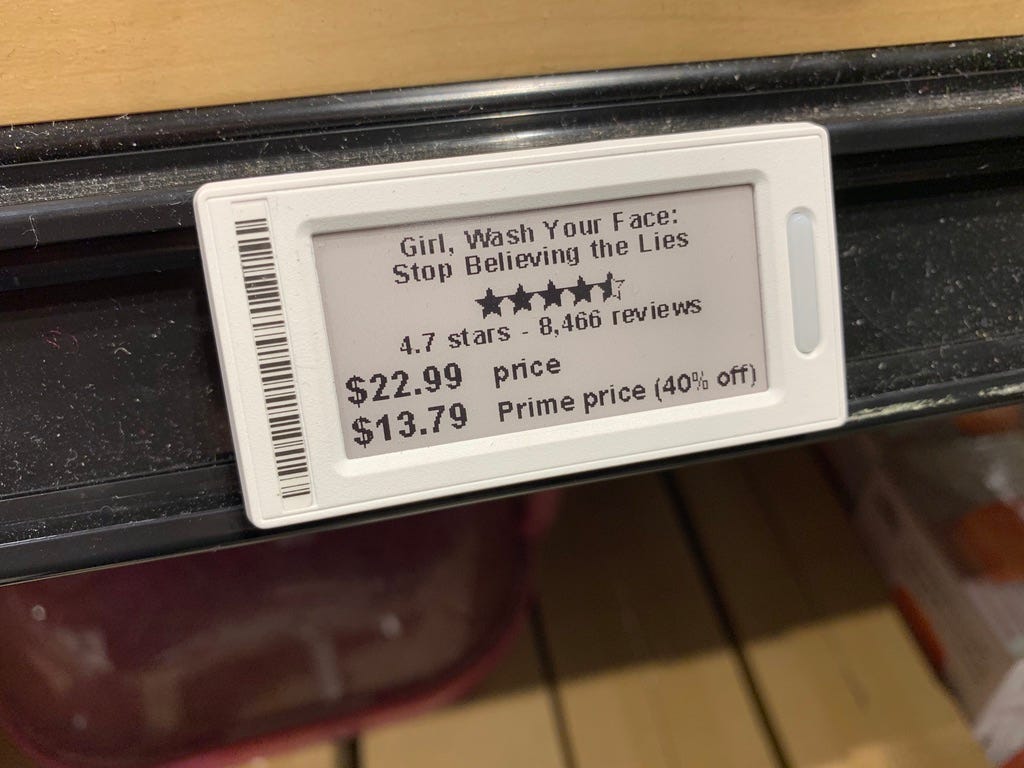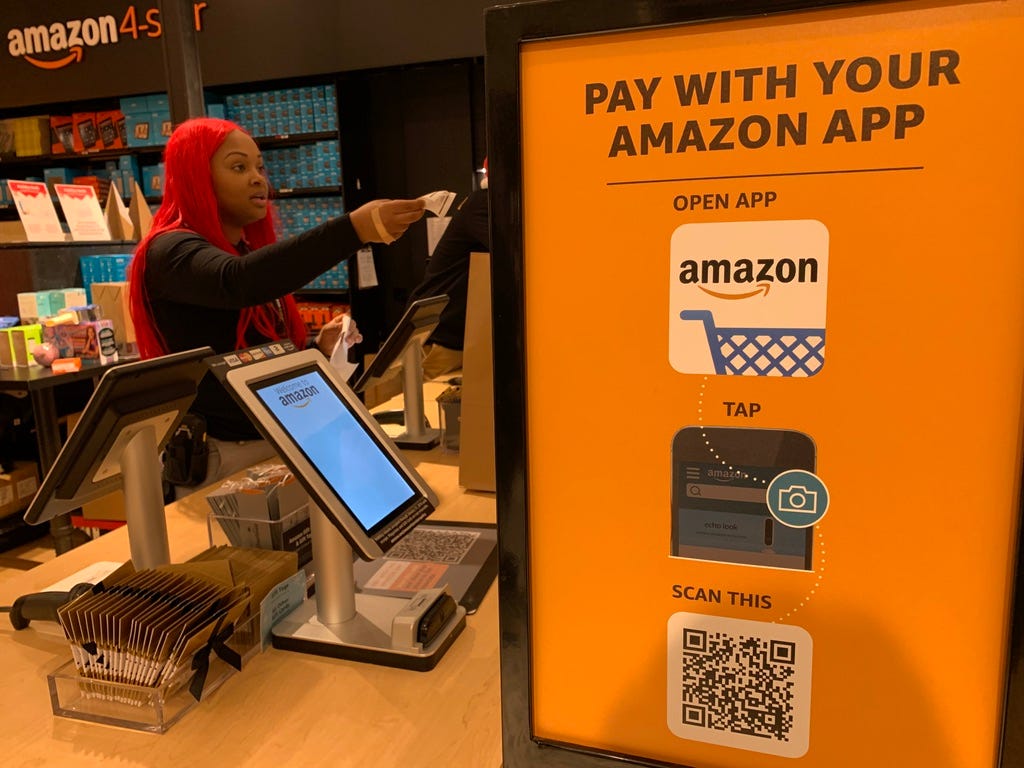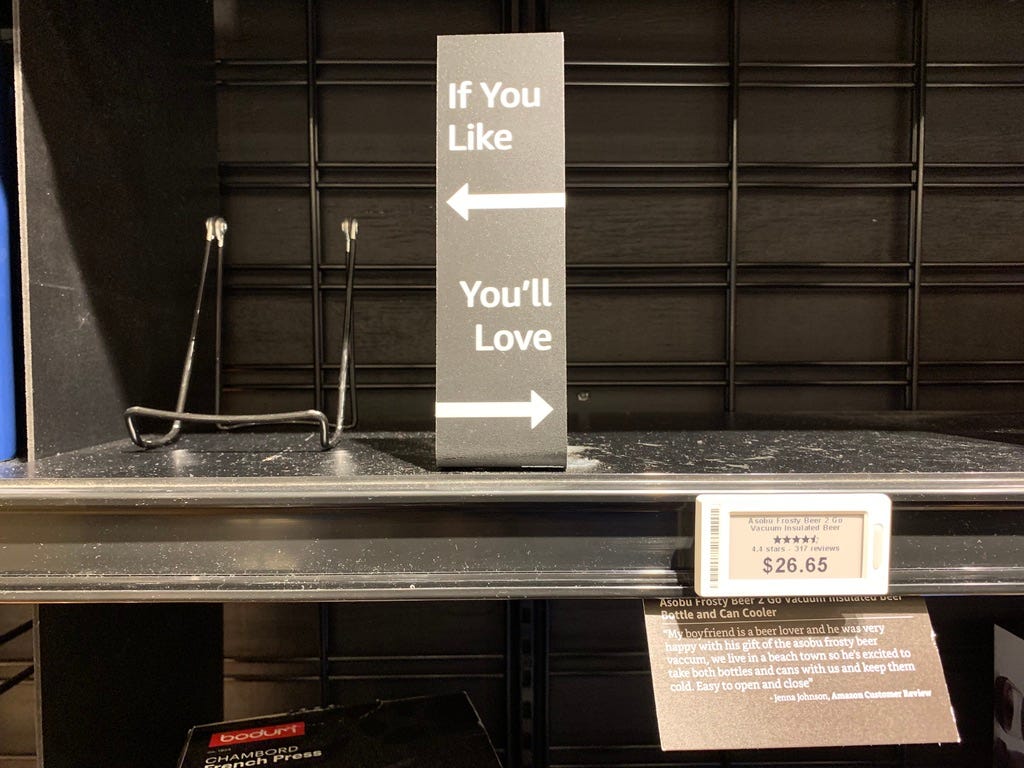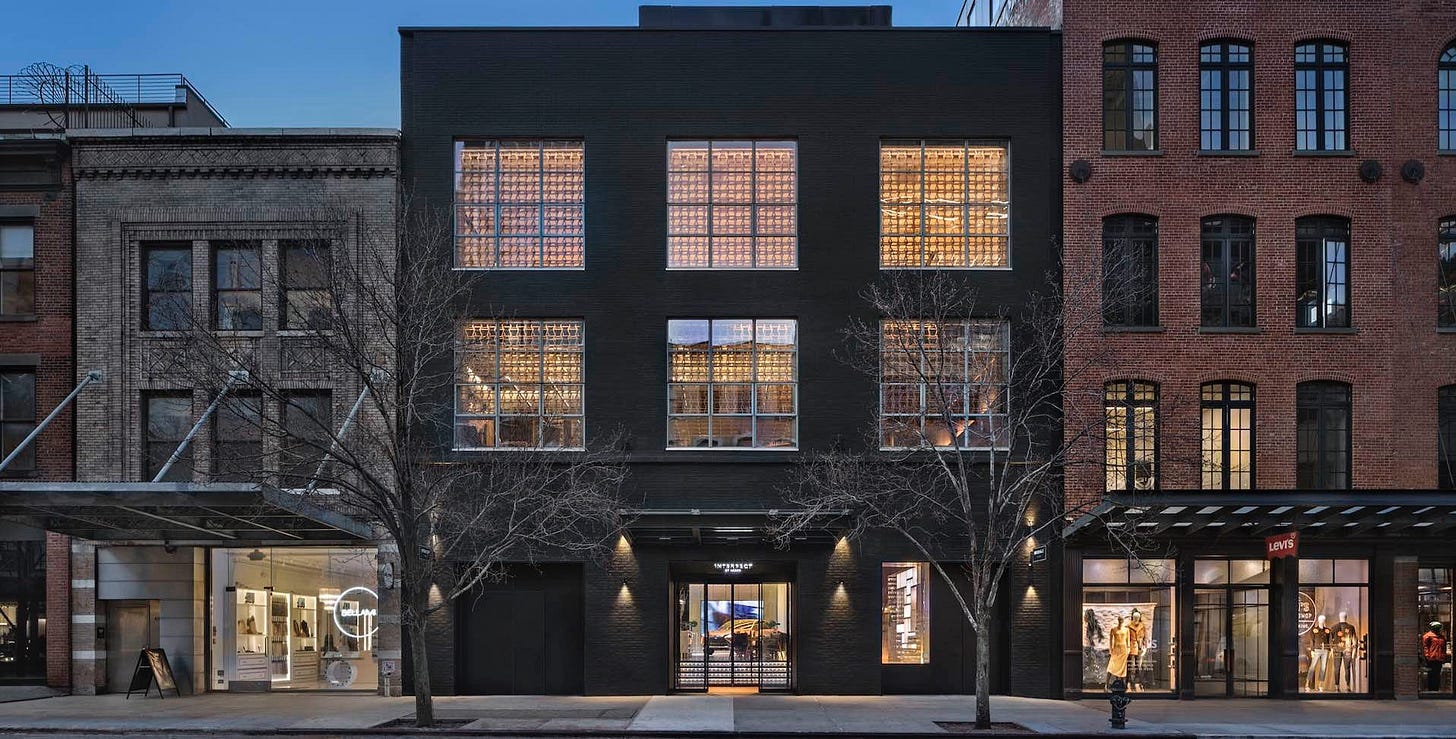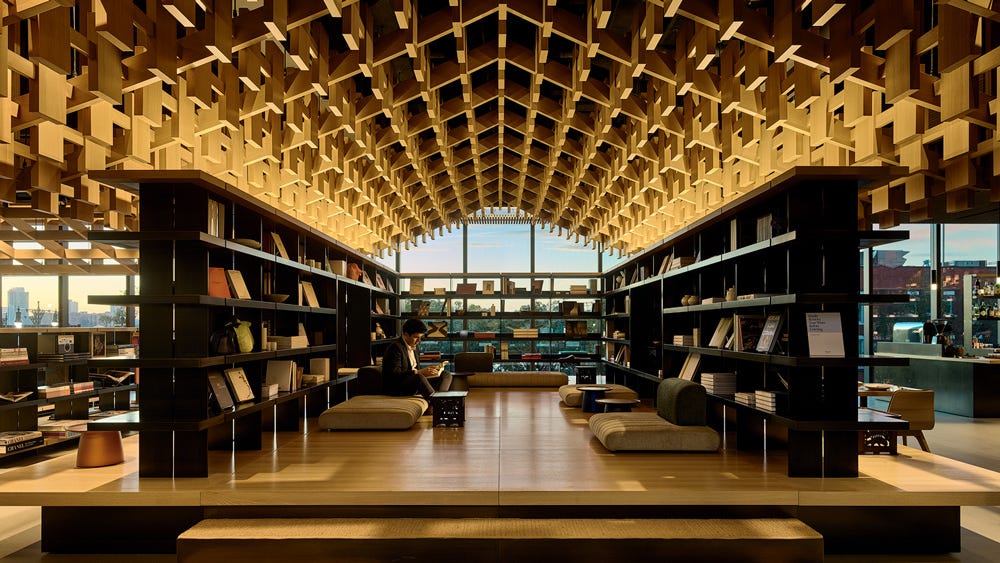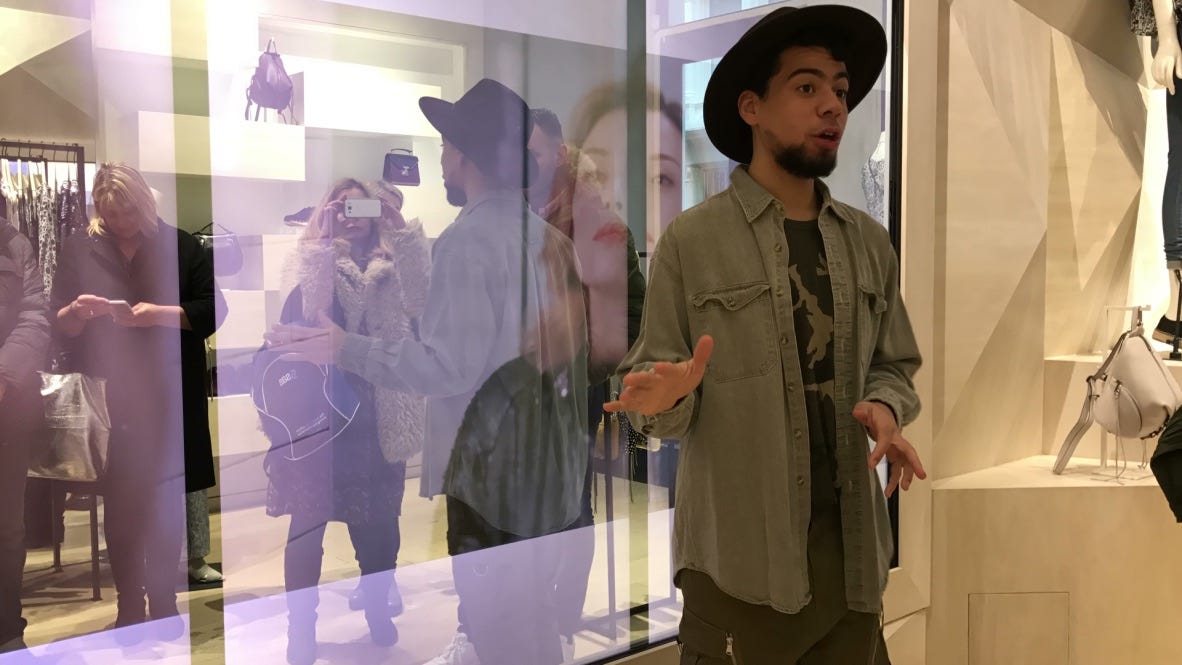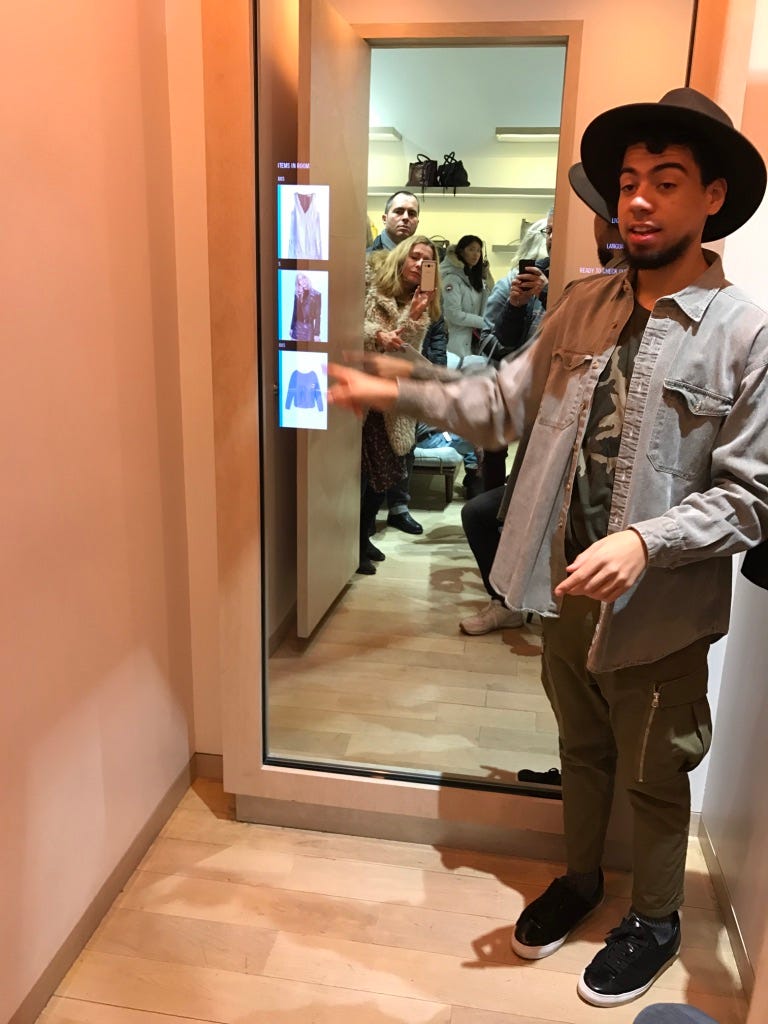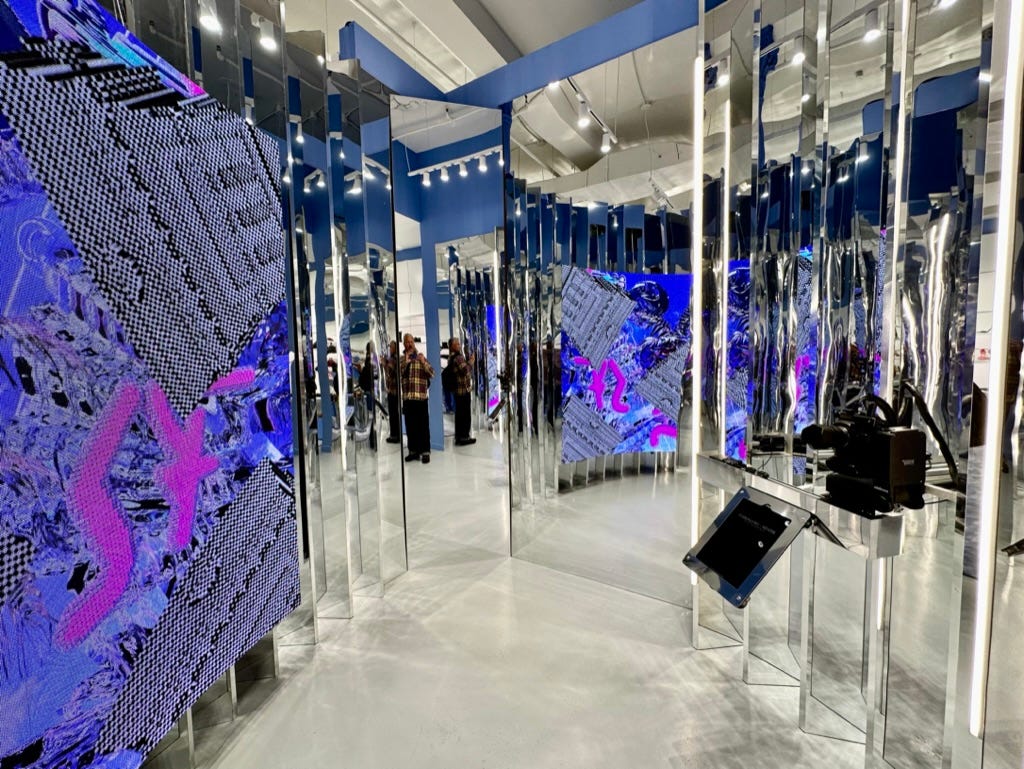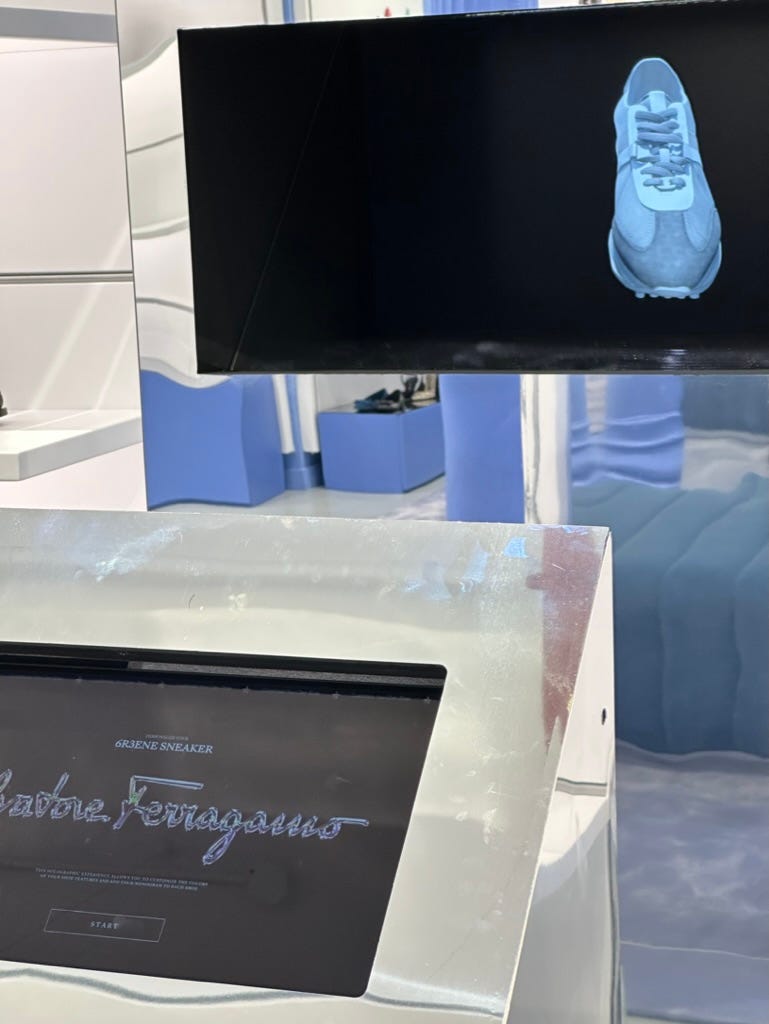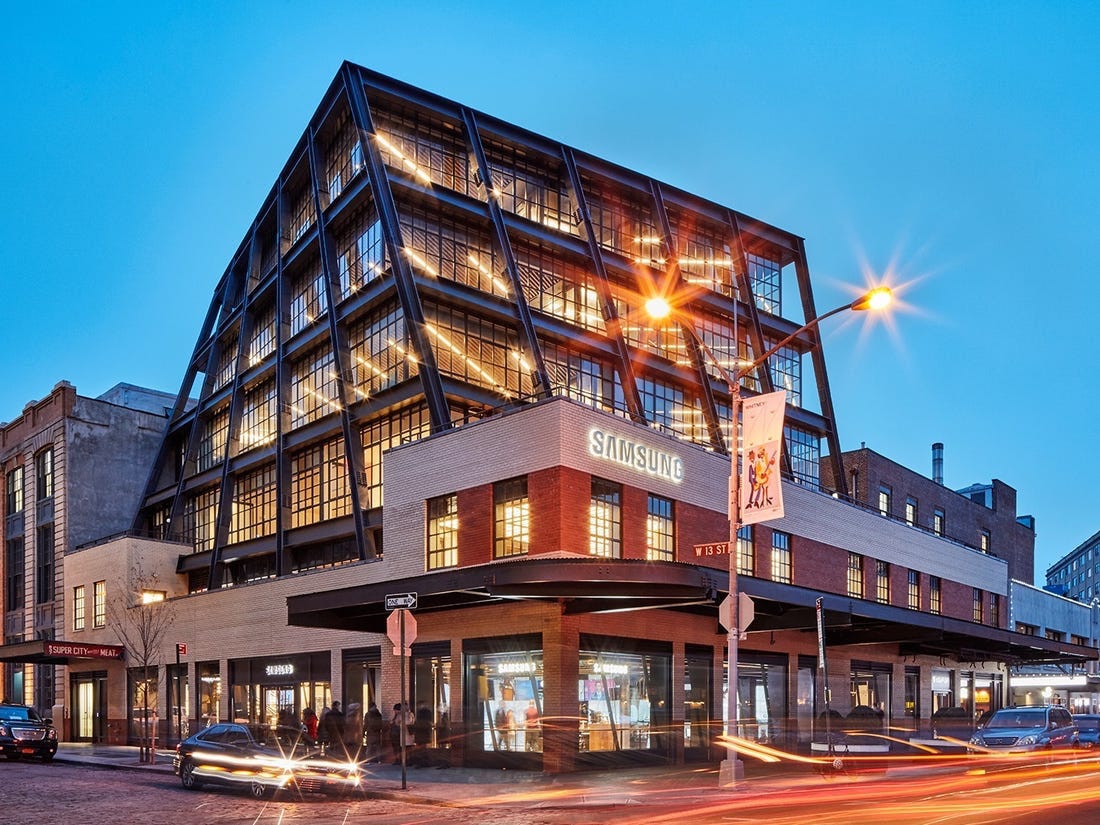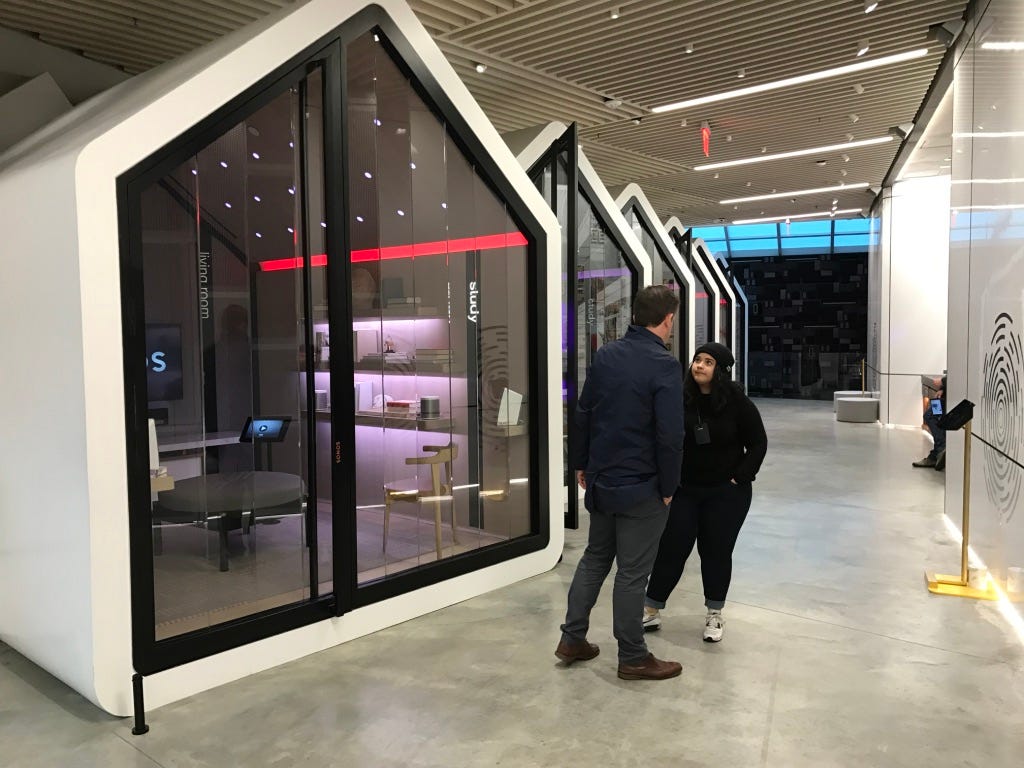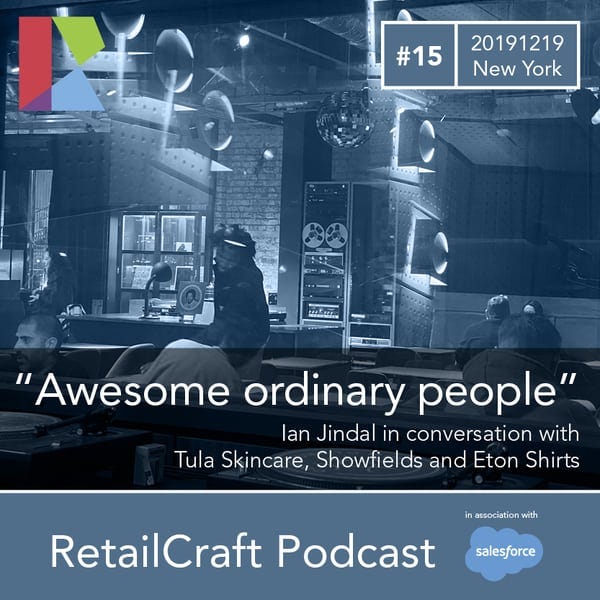They shone brightly
A partial list of shuttered New York stores that were once exemplars. Allure, Amazon 4-star, Intersect by Lexus, Rebecca Minkoff, Ferragamo, Samsung837, The House of Showfields and Neighbourhood Goods
As I prep for the must-visit stores in New York City (an annual activity each January, alongside the National Retail Federation’s Big Show), I see in the archive stores that were once exemplars but no longer exist. Here’s an alphabetical listing, noting why they shone so brightly in their time, why they have dimmed or disappeared and the stardust that they have left for us today.
You can see my 2025 'longlist' of stores here: https://retailx.net/newyork/nrf2025/ and I’ll update my ‘top11’ wow stores in January.
The disappeared and diminished
Allure
Allure magazine launched a physical store in Soho in July 2021. Or rather, I should say “media” since the print instantiation of the magazine ceased publication in 2022 and the title moved to digital. In their store they looked to blend editorial choice with beauty brand launches and selling, combined with a social-media integrated store. Editorial recommendations, iPad displays were of course present. Most interesting was the ‘send my photo to my friends on social’ connected mirrors - a fun gimmick, but also great for data capture, follower boosting and social amplification. In common with most media titles Allure wanted a share of the retail revenues and in my view created an exemplar store for product, recommendation and social. However, it’s no longer open, even if their merchandising approach is now widely adopted.
Amazon 4*
Amazon’s entry into physical retail already had bookshops (which of course sold Amazon’s own-brand electricals), and technology platforms (Amazon Go and its various tracking and payment options), but this was a general merchandise offer. The concept was to stock products that were 4*-rated or higher and bought within the local area (really, Soho residents?). The idea was to allow “the customer to merchandise the store”, and then show the feedbacks, reviews and recommendations. Spoilter alert - I hated the store. It was like a badly managed pound shop that hawked Ring doorbells, Kindles and cables in an unreadable bazaar of rubbish. I would say this on every tour - and then watch agog as my tour group raced around, wowed at the approach and then queued to buy things they needed! Just shows, never listen to a so-called expert ;)
The store lasted a couple of years, captured lots of data and no doubt gave Amazon a lot of insight. Data-informed and localised merchandising is now the norm (see Target’s Soho store as a grocery/convenience exemplar), as is member pricing and integration of a loyalty card. We see their learnings in Wholefoods Market, for example.
The store is now the home of Glossier’s second incarnation of a flagship in Soho.
Intersect by Lexus
An early flagship in the development of the Meatpacking area, this was a car showroom without a car. Rather, it aimed to build a ‘lifestyle’ glow around the Lexus brand, and so the not-a-store featured a high-end coffee bar, restaurant, cocktail area, Japanese-Danish design area (books, ceramics) and generally sought to give a warm glow to those who had a Lexus keyfob nestled in their gorpcore, discerning-citizen trouser pockets.
Initially I thought this was a pop-up stunt, but the explanation I received was that running the building cost the same as a number of billboards, yet provided great coverage, contact and experience.
Sadly the store closed, but its legacy lives on in the area as it’s somewhat of a car microzone. We have Tesla’s showroom, a Rivian showroom, Fisker and Lucid all within a block. However it is the bold Genesis House that most clearly takes the DNA forward. This sumptuous showroom over three floors - a temple of polished concrete and minimalism - has cars (you can do anything except buy one), a Michelin-starred Korean restaurant, a lending library and tea ceremony space with incredible views, and an underground 3D theatre and experience space.
Check out Genesis House to see the latest iteration of experience building around a car brand.
Rebecca Minkoff
Rebecca Minkoff’s Soho store opened on Greene Street in November 2014 and created quite a buzz. Over and above the desirability of the must-have bags and apparel, the store was, at the time, the acme of digital integration. Customers were greeted with a whole-wall interactive display, and the changing rooms boasted RFID-triggered magic mirrors that would show the products you had with you in the changing room and offer additional information. The store brought to life the promise of a digitally enhanced store while providing data that could be used to improve sales. Digiday’s article gives the view after a year. Personally I was struck by the quality of the store staff - they were so friendly and service-focused, yet also able to explain RFID sensing, online/offline integration and data tracking. It was an impressive experience.
Post-pandemic Minkoff has closed her physical stores and sells exclusively online. However, we see the reverberations of that store in the many subsequent iterations of magic mirrors, interactive changing rooms and in-store display.
Salvatore Ferragamo’s NFTs in Soho
Ferragamo’s new-in-2023 store in Soho boasted a fresh location-specific colour (a vibrant blue-green play on Greene Street) and a move into NFTs and digital customisation. The NFT studio comprised a glorified photo booth with an ever-changing background (making each shot unique - if somewhat undifferentiable by the casual observer!). As each ‘snap’ was taken it was minted as an NFT - a certificate of authenticity that supposedly elevated the snapshot from mere Insta-fodder to a Web3 asset. In order to get your NFT you had to register and so the whole booth became a honey-trap from young customers who might not have considered the brand.
In addition the ability to customise your $1000-dollar sneakers was cute, but a case of perhaps not reconciling the moneyed cohorts with the digitally-amusable ones?
The staff were game and offered some of the best explanations of NFTs I’ve heard. Furthermore they confirmed that the buzz around the booth was bringing in very new interest groups to the brand.
Billed as a “laboratory” rather than as a store, we find two years later that it’s returned to normalcy with nary a sniff of digital in the store. Fundamentally the ROI of the digital crowds did not match the rent of the premises and so the integration of NFTs into the retail experience in luxury was more of a shooting star than a true cosmic event.
Samsung 837
This was Samsung’s Apple-store-challenging prestige plot in the Meatpacking, and for me was the exemplar of a tech brand’s experience store. Two things stood out - the incredible wall of video screens and amphiteatre, and the way that the store covered Samsung’s enormous range, from phones to TVs via washing machines and fridges. It “made sense” of the brand. Sadly, the store closed on 31 December, 2024, bringing to an end its tenure as a pioneer in the redevelopment of the Meatpacking District. RIP, Samsung 837 - Google, Apple and others still have lots to learn from this store.
Sonos
Pre-covid, Sonos leaped onto the “experience store” approach with a fun and confident pods-in-a-space store in Soho. The polished concrete minimalist space housed a series of ‘lifestyle vignettes’ that showed Sonos products in various home, office and lifestyle spaces. Customers could sit in the pods and hear the Sonos musical experience and understand the control interfaces, and they would collaborate with furniture designers and other brands to kit out the pods.
The store had the feel of a marketing pop-up rather than a sales-per-square-foot activity, but it’s none the worse for that. We see the idea of an ‘experience space for ears and lifestyle’ in the current Bang & Olufsen Soho flagship on Spring Street, and in the contemporaneous Devialet store (the unconventional French brand, dripping in patents, who needed an experience space to illustrate the “heat bass implosion” sound… Sidenote: their store is now on Columbus).
This store was an early exemplar for brands to bring their experience to life - showing that a web image alone was not enough.
The House of Showfields and Neighbourhood Goods
House of Showfiledds was a development that blended department store with experiential fun with theature with pop-ups. Allow me to explain! Take a multifloor ‘department’ store and fill with lifestyle brands. Animate those brands - for example, there was a vinyl record store with a small live performance stage. Add in paid actors who would animate the space - running demos, moving people through the experiences. And finally a hidden helter-skelter slide that allowed you to whoosh down to lower floors… The business model was a tenancy charge with share of revenues, so borrowing from a department store. In the frenzy of twenteens’ start-ups and “digitally native vertical brands” (DNVBs) this was a case of selling shovels in a gold rush - providing an attractive destination and showcase for them. A sort of Dover Street Market for DNVBs.
I interviewed the founder of Showfields back in 2019 for the RetailCraft Podcast and he covers the business model clearly. After their time in Soho they opened a more normal, large store in Brooklyn. This store looked like a temporary space in a half-finished office development and while it kept the interesting brand arrangement it was on a single floor and so eschewed the slide, the social space, the theatre… Sadly this too has now closed.
Neighbourhood Goods1 was a similar “department store of popups” that ran for a couple of years in Chelsea. The focus was upon providing a showcase for independent brands and there was a feeling of common purpose and discovery in the store. Situated within the Chelsea Market warren of stores and bazaar-like stores, Neighbourhood Goods was positioned between the market-stall and the posh department store.
Taken together we can see the influence of the “high experience, high curation” in most modern department stores, while the interactive aspects and discovery are also widely prized.
That’s it
… for January 2025’s review. My current “worth checking out” store list for New York is available for review - let me know your thoughts, both on the current store list and the legacy of the stores above.



